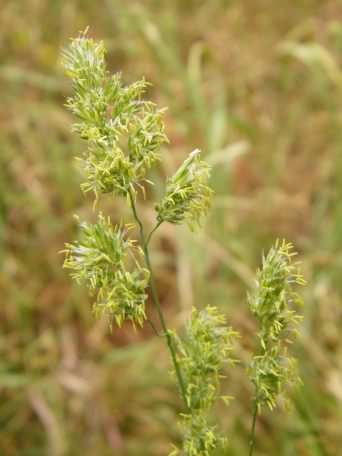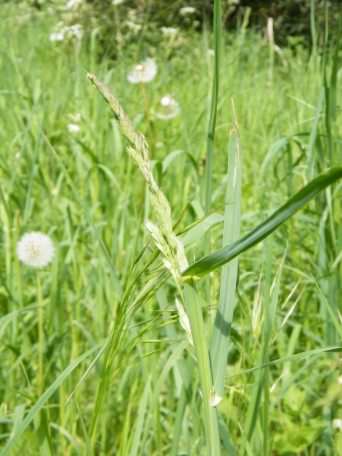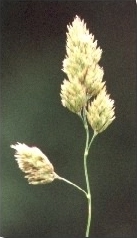


Photos ©2004–
Click either of the two left photos for a larger image
Cocksfoot - Dactylis glomerata
Family - Poaceae
Also known as - Orchard Grass, Cockspur
Tussock forming deep rooted perennial grass of woodland paths, grasslands, hedgerows, meadows and pastures it is widespread and very common in most areas, it grows continuously from a deep rooted base and will withstand heavy grazing or trampling. Regarded as originally native to Europe, Asia and North Africa, it is an introduced species to many areas world wide as an invasive in New Zealand and Australia. It grows to 60–150cm (1.9–4.9ft) high with rough leaves 30–60cm (12–23.5in) long and 5–10mm (0.2–0.4in) wide, having inrolled edges and rough stout stalks. The plant is easily identified when in flower during May to August. Purplish spreading inflorescences are erect panicles 8–20cm (3–8in) long, bearing spikelets on rounded stalks in dense one–sided clusters, they are said to resemble the shape of a bird's foot.
Cocksfoot is used for forage, pasture, ground cover, hay and silage and numerous cultivars have been developed for late maturing, better productivity and disease resistance, wider adaptability and nutritive value. It grows well on drained or dry soils, clays and loams and is tolerant of shade, high temperatures and drought but not humidity.
It is a food plant for caterpillars of several butterflies including the Meadow Brown, Gatekeeper, Speckled Wood, Large Skipper, Essex Skipper and Small Skipper butterflies, all species to be found in Brickfields Park.
 |
 |
 |
Photos ©2004– Click either of the two left photos for a larger image | ||
Site design ©1999– Brickfields Country Park - Privacy -